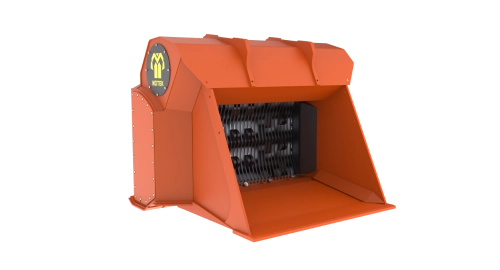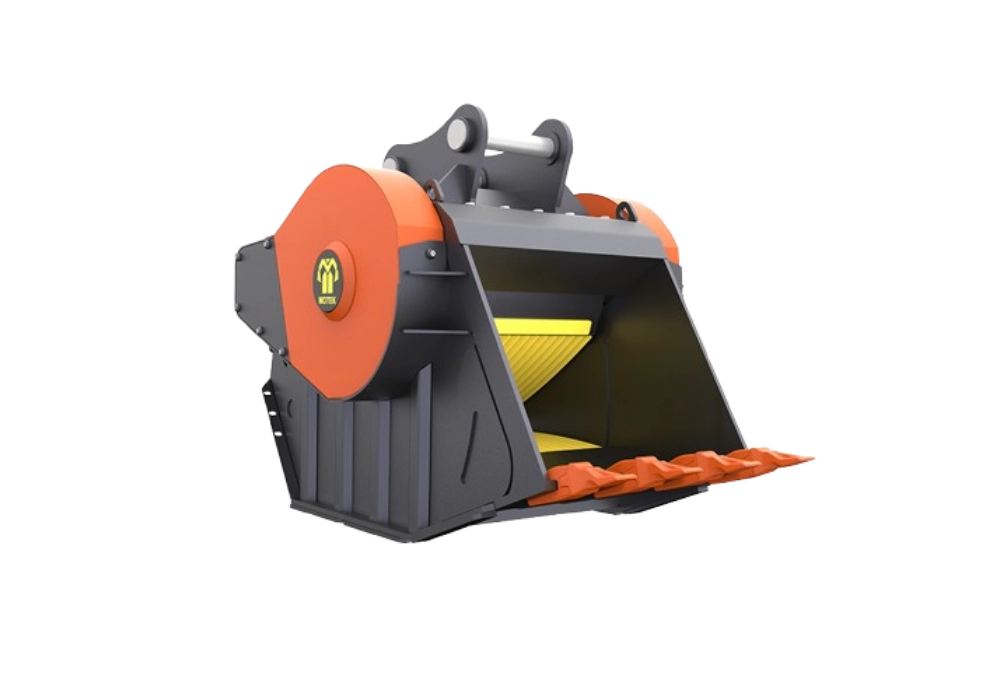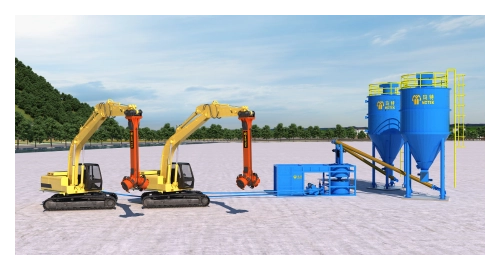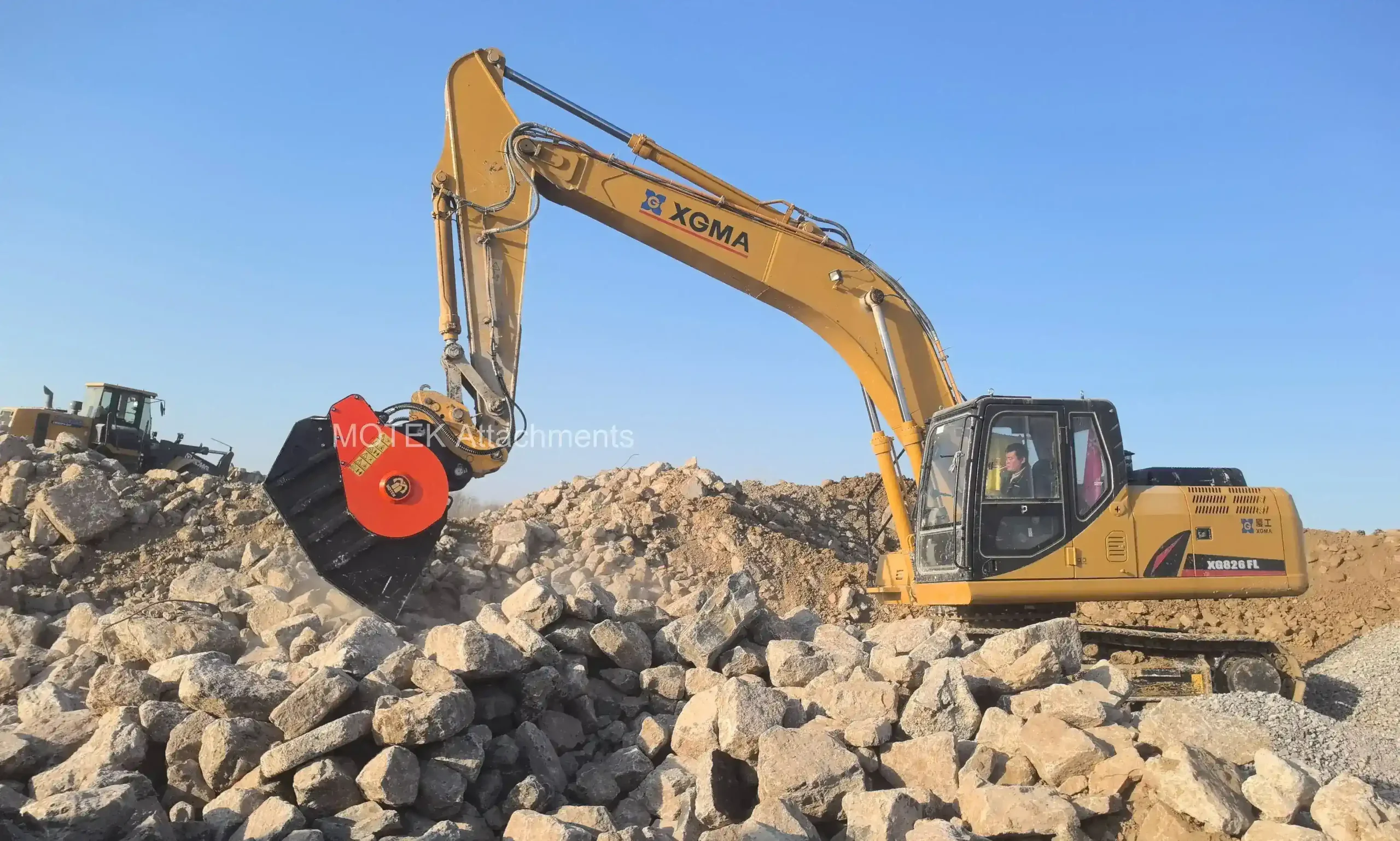MOTEK Screening Buckets in Pipeline Backfilling
Release time: 2025-04-08

In municipal engineering, oil and gas pipeline laying and underground pipeline network construction, pipeline backfilling is the core link to ensure project quality and long-term stability. The quality of backfill materials is directly related to the pressure resistance, anti-sedimentation performance and safety of the surrounding environment of the pipeline. As an efficient material handling equipment, MOTEK soil screening bucket plays an irreplaceable role in pipeline backfilling with its precise screening and classification capabilities.
Function and working principle of screening bucket
MOTEK screening bucket attachment is a multifunctional equipment installed on excavators or loaders, which uses vibrating screens to grade and screen materials such as soil, sand and gravel. Its core functions include:
1. Particle classification: Classify materials by particle size through screens with different apertures to separate particles that meet backfill requirements.
2. Impurity removal: Remove foreign matter such as stones and construction waste from the soil to prevent hard objects in the backfill material from damaging the pipeline.
3. Uniform mixing: MOTEK screening bucket for excavator has a stirring function, which can optimize material grading and improve the density of the backfill layer.
Specific application of MOTEK screening bucket in pipeline backfill
1. Optimize the quality of backfill materials: Pipeline backfill usually requires the use of fine-grained soil or gravel to avoid uneven stress distribution due to the concentration of large particles. MOTEK screening buckets can accurately control the particle size range of the backfill material (for example, 0-20mm), remove stones that exceed the standard, and ensure that the material meets the requirements.
2. Improve construction efficiency: Traditional backfilling requires manual picking or purchasing qualified fillers, which is costly and has a long cycle. MOTEK digger screening bucket can directly handle the excavated earthwork at the construction site, realize the integrated operation of “digging-screening-filling”, reduce material transportation and secondary processing links, and shorten the construction period by more than 30%.
3. Prevent pipeline damage: If there are sharp stones mixed in the unscreened backfill soil, it may scratch the pipeline anti-corrosion layer during the compaction process, or even cause structural damage. MOTEK screening bucket removes hard impurities through screening, significantly reducing such risks.
4. Adapt to complex geological conditions: In clay or frozen soil areas, MOTEK screening bucket can separate suitable sandy materials as backfill media to improve water permeability and prevent pipeline displacement caused by frost heave or water accumulation.
Analysis of the technical advantages of MOTEK screening bucket
1. High flexibility: MOTEK screening bucket can be directly installed on the construction machinery without the need for additional power devices, and is suitable for field operations and narrow sites. It can meet diverse needs, such as coarse screening (construction waste cleaning) or fine screening (fine sand preparation).
2. Significant economic efficiency: By recycling the excavated earth, the cost of purchased fillers and the cost of waste transportation are reduced. Taking a municipal pipeline project as an example, the backfill cost was reduced by 45% and carbon emissions were reduced by 20% after the use of the screening bucket.
3. Improve the quality of the project: The material after screening is evenly graded, and the density after compaction can reach more than 95%, which effectively avoids the collapse of the road surface or deformation of the pipeline interface in the later stage. At the same time, the uniform backfill layer can balance the load distribution and extend the service life of the pipeline.
MOTEK screening bucket pushes the traditional backfill process to refinement and greenness through technological innovation. Its value is not only reflected in the improvement of construction efficiency and cost control, but also in providing a guarantee for the safety of the entire life cycle of the pipeline project.








